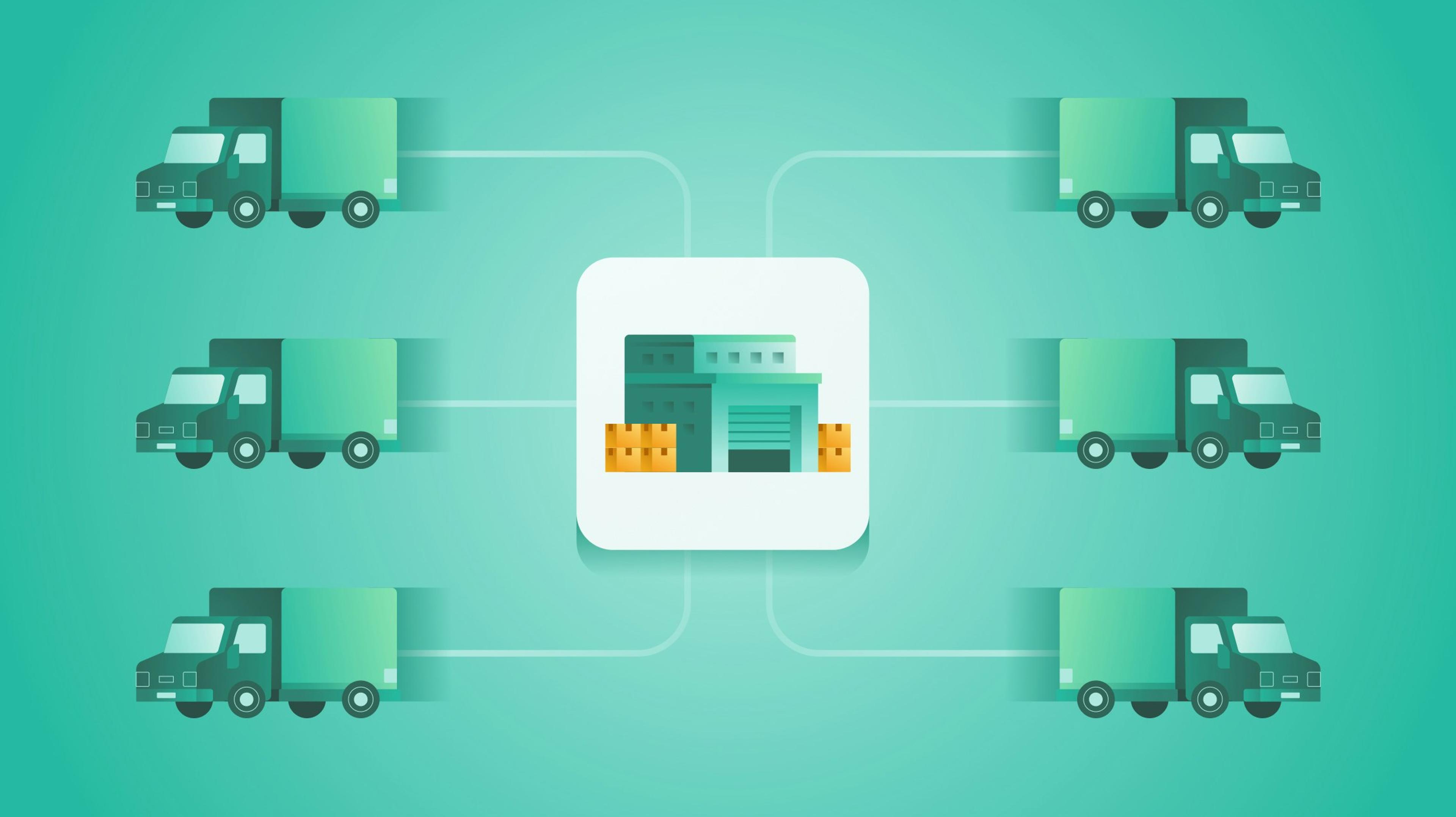What Is Consignment Inventory, and Should You Use It?

Track your inventory all the way to its final destination with Circuit for Teams.
Ever wondered how a bookstore can stock so many different titles or a boutique can offer an endless array of unique merchandise? It’s all thanks to a strategy called consignment inventory.
Consignment inventory is a business arrangement where goods are left with a retailer, but payment isn't made until the items are sold.
At first glance, it might seem like a roundabout way of doing business. But this concept has reshaped inventory management and transformed the way retailers handle their supply chain.
In this post, I’ll dissect everything from when it's ideal to start a consignment inventory arrangement, to the best practices for navigating it, to the type of businesses it can benefit most, and even how to deal with the challenges.
Key takeaways
- Consignment inventory works when a consignor supplies goods and the retailer pays only once those goods are sold to end customers.
- It provides exposure for new brands with reduced upfront costs, yet it can pose challenges, like the potential for unsold inventory and delayed payments.
- Consignment inventory is particularly suitable for startups and small businesses who want to test new products or markets without a significant upfront investment.
- Best practices include fostering strong relationships with retailers, managing inventory effectively, and resolving issues promptly to maintain trust and streamline operations.

How does consignment inventory work?
In the consignment inventory model, there are two main characters: the consignor and the consignee.
The consignor is usually a manufacturer or a distributor who has consignment stock they want to sell. The consignee is a retailer that has the space to sell it, often a store or an online platform.
Here's where consignment inventory management starts working its magic.
The consignor provides the products to the consignee, but ownership of the consigned goods doesn't change hands just yet. The consignee stores and markets the goods, and only when an item is purchased by a customer does ownership transfer.
Let's say you're a local artist (the consignor) who creates beautiful handmade pottery. You don't have a retail store of your own, but there's a popular boutique in town (the consignee) that agrees to display your pottery on its shelves.
They don't actually buy the pottery from you. Instead, they pay you for it when someone else buys your pottery from them. Until then, the goods remain technically yours, even while they are located in the boutique.

Pros and cons of consignment inventory
Now that you've got a grasp of how consignment inventory works, you might be wondering if it's the right call for your business. Like most things in life and business, consignment inventory comes with its pros and cons.
Whether you're a manufacturer considering offering your goods on consignment, or a retailer contemplating whether to accept items on a consignment basis, you’ll want to weigh these advantages and disadvantages to see if it's the right fit.
Pros of consignment inventory
- Reduced risk: Since the consignee only pays for the product once it's sold, there’s a lot less financial risk associated with stocking new consignment items.
- Increased product range: Consignment allows retailers to expand their product selection without upfront costs, increasing the variety available to customers and potentially drawing in more business.
- Test market response: New products can be introduced and tested in the market without the need for the retailer to make a large initial investment. This provides valuable insights into customer behavior and preferences.
- Improved cash flow: For consignees, consignment inventory works like a charm in improving cash flow since they aren’t paying for the inventory until it sells.
- Product visibility for new brands: For suppliers, consignment inventory can provide the opportunity to get new products into stores and in front of customers, which might not have been possible otherwise.
- Avoiding inventory carrying costs: Transportation, storage, insurance — carrying inventory incurs multiple expenses. With consignment inventory, consignors can avoid these additional costs.
- Streamlined supply chain: With consignment inventory, consignors can directly oversee their inventory levels and how they're sold, often resulting in a more efficient and streamlined supply chain.
Cons of consignment inventory
- Unsold inventory: Here's the big risk — if goods don't sell, consignors might need to take back any unsold products, which could become an issue, especially for perishable goods.
- Lack of control: Once products hit the retailer's shelves, consignors lose some control over how they're sold. Retailers have the final say on pricing, product display, and promotion.
- Delayed payment: Remember when we said consignors only get paid when your items sell? That's great, except for when they don't sell as quickly as hoped. In such cases, this business model might cause some interruptions in cash flow.
- Decreased urgency to sell: Retailers may be more motivated to sell the products they have purchased outright rather than those on consignment because they've already invested money in those items.
- Inventory management complications: Tracking which stock is on consignment and which isn't can get confusing and lead to stockouts.
- Higher upfront costs: Because consignors supply goods to the retailer before they’re actually sold, the upfront costs are likely to be higher. They’ll need to bear the expense of creating, packing, and delivering the items to the resale location without being able to do any forecasting on their return on investment (ROI).
When should you use consignment inventory?
Consignment inventory works best when a business wants to test a new product or tap into a new market without investing too much upfront. This is particularly useful for small businesses and startups that might have cash flow constraints.
For instance, consider local artisans or independent clothing designers. They often have innovative products, but breaking into the market can be tough for them.
With consignment, they can get their products out there, into shops, and in front of customers without the retailer having to commit to buying stock upfront. It's a great way to gain exposure and see if their product has legs.
Manufacturers of seasonal goods can also benefit from consignment inventory. These products can be hit or miss depending on the time of year, and consignment allows retailers to stock these items without getting left with unsold inventory if they don’t sell as well as expected.
Technology manufacturers and sellers also commonly use consignment due to the rapidly evolving nature of their products.
New versions or models usually make older tech go obsolete very quickly. So, consignment provides a way to get these new products to market faster and reduces holding costs and the risk of having unsold, outdated stock.
Companies that deal with high-value items like luxury jewelry or fine art might also find consignment inventory useful. Often, these items move slower than less expensive goods, and consignment lets retailers offer these premium products without tying up a large amount of capital in inventory.

Consignment inventory best practices
Navigating the world of consignment inventory can sometimes feel like walking a tightrope, balancing its benefits against the challenges. But don't worry — these actionable tips will help you make the most out of the consignment model.
Watch term limits carefully
Term limits are the timelines agreed upon between you and your consignment partner for keeping the inventory. Think of it as the "sell-by date" for your products.
If the products don't sell within this agreed period, then they usually need to be returned, or the terms renegotiated. So, keep tabs on these dates because dealing with a batch of unsold inventory might cause some unwanted surprises.
Use consignment inventory software
Traditional inventory is a thing of the past, so one tool you don't want to overlook is consignment inventory management software. Think of it as your personal assistant that takes care of tracking inventory, managing sales reports, and even initiating payments between consignees and consignors.
A good inventory management system should integrate with popular operating systems and platforms, keeping everything streamlined and up to date in real time.
Create mutually agreeable contracts
A rule of thumb is to make a consignment agreement that results in a win-win situation. It should include a sustainable commission rate, defined shipping costs, a clear return policy, and confirmation methods for new consignment sales.
It's about making sure everyone knows what's going on, who's responsible for what, and what happens if things go south. The contract should also clear up any fuzzy areas, like who pays for shipping or what happens if stuff gets lost or stolen.
Don’t oversupply as a consigner
Remember, more isn't always better. You might be tempted to flood the retailer with your products, but doing so could lead to your items becoming overlooked or undervalued.
And if the items don't sell as you'd hoped, then you'll have to deal with returned stock. It’s all about finding that sweet spot — supply just enough to make your presence felt but not so much that it overwhelms the retail space.
Resolve issues quickly
Nobody likes to feel abandoned, and this rings especially true for consignees who might feel slighted if support is not prompt, leading to cracks in the business relationship.
Having a dedicated response team ready to jump in and address any snags that crop up will show the consignee that their partnership is valued way beyond the confines of a legal contract.
Discover how Circuit for Teams can streamline your delivery process
We've toured the ins and outs of consignment inventory, looked at its pros and cons, and explored when and how it can be the right choice for your business. It's a tool with powerful potential in the right hands, with opportunities for product testing, market expansion, and reduced upfront costs.
Whether you're a consignor or a consignee, managing those deliveries can be a challenging task without the right tools. Circuit for Teams simplifies the process, giving you the freedom to focus more on strengthening your business relationships and less on juggling deliveries.
Circuit for Teams streamlines consignment operations with automated route optimization for timely deliveries and cost-efficiency, along with real-time tracking to enhance consignee inventory management. Plus, the proof of delivery feature boosts accountability, preventing disputes and maintaining trust in your supply chain.
It's not only about surviving the world of consignment inventory — it's about thriving in it. Time to elevate operations, minimize mishaps, and boost business outcomes!


